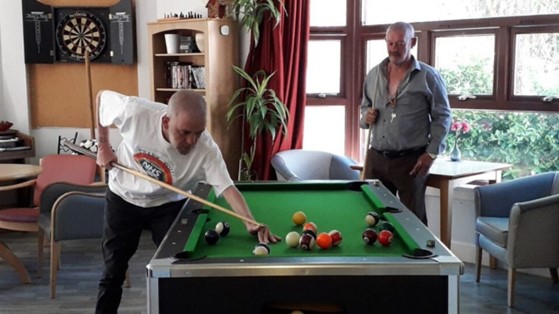In my last blog, I pointed to the warning signals I am picking up around a crisis ahead in the charity sector. In short, what charities do is urgently needed but less resourced than ever. I have called the stress and impact of this at the level of an individual charity a ‘scissors effect’.
For the charity sector, the cost of living crisis is as much an opportunity to help people who are in need as the pandemic was. But it is no less a risk to charities themselves, many of whom go into this weakened by the pandemic, with less reserves, less discretionary spending and now it looks like less volunteers to help out.
There were siren voices at the start of the pandemic that said up to one in three charities were folding. That always seemed to me to be unlikely. My rule of thumb is that when voluntary organisations are under threat, they become more voluntary. Charities with one or two members of staff for example, may become entirely volunteer run, typically through their trustees.
It is hard to start a charity, but it is also hard to kill one. This is a resilience, characteristic of charities, that we have a purpose that moves people to act, and we have a culture that allows for different forms of participation.
In this post, I want to look at three tips for financial resilience for charities. These draw on our work at Pilotlight, with a story for each. Naturally, they are not comprehensive, but neither are they comfortable. I believe at this point, all three could be part of the conversation for many more charities.
Tip #1: Sometimes you have to drop what you do in order to move forward

Prospex is a youth charity based on the Holloway Road, North London. In 2011 they were “up shit creek”, with a financial crisis and core funding ending -one worker felt on the edge of a heart attack. In the local pub, the team decided to work with Pilotlight and to face up to the crisis.
With support from a team of Pilotlighters, they moved from ten services to three priorities and used these successfully with funders to secure emergency support. The lead youth worker, Beef, stepped up to become a very capable CEO. After a follow-on pro bono project with Pilotlight, Prospex was chosen as charity of the year by Royal Bank of Scotland, attracting added funding.
Eleven years on, the charity is supporting a wide range of young people, including Rhea, born in the year of their crisis.
The lesson is that it is natural for services to spread over time, but when times are hard it helps to be clear-eyed and focused on what your primary purpose is... and is not.
“The charity helped me to understand how to respond to real life situations.”
Rhea, 11
Tip #2: Start with the ‘how’ and not the ‘why’

Imara supports children, young people and their safe family members after a disclosure of child sexual abuse. The founder, CEO Cath Wakeman came to Pilotlight looking for help to understand what processes and practices she could put in place to support effective planning after the charity had come through a period of rapid growth.
We were able to bring together a team from Barclays to delve deeper into the challenge and presented Cath with a proposal and road map to support this. Since completing Pilotlight Direction, Cath is revising the aims for the business plan and incorporating recommendations from the Pilotlighters.
“It’s a victory to have gained a new focus on our organisation’s structure and a way to improve service delivery. Once I was helped to see where Imara was headed, projects are now moving in that direction” says Cath.
The impact of Imara doing what it does well is profound. Alice is a member of their Participation Group of young people who have accessed support from Imara. Choosing an object to reflect how she felt about this project, she chose a top that she had purchased recently – something that:
“I wouldn’t have worn or even bought when I was in my darkest places.”
It has become common in the field of business and purpose to ‘start with why’, in the memorable phrase of business writer Simon Sinek. For charities, I argue that we need to start with ‘how’ – the organisational practicalities.
As regulated entities, the ‘why’ is plastered all over what we do, and the true way to live up to that, to make a difference, is not to be yet another me-too ‘why’, but to be an effective ‘how’. It is what we do in line with our values that makes a difference.
Tip #3: Take the right risks, it is what you are there for

Rowan Alba supports vulnerable people affected by homelessness in Edinburgh, many with complex, long term issues such as poor mental health, and drug and alcohol abuse. The most significant challenge that CEO Helen Carlin identified is securing appropriate accommodation in Edinburgh. With spiralling property prices, the charity finds it difficult to compete with commercial landlords.
Informed by work with Pilotlight, Rowan Alba created a co-operative investment vehicle to raise capital to enable the charity to buy its own residential home. Changing her fundraising strategy to raise community shares, led to larger injections of cash empowering the charity to compete for the property it needed. In partnership with Common Ground Against Homelessness, Rowan Alba raised over £715,000 of investment in support of a new centre for street homeless men in Edinburgh’s Peffermill.
Clearly, some big risks came with this, but Helen put some of the value of her own home into it as a member investor and the charity is growing its services as a result. As a member investor myself, I have loved watching this progress.
The world of risk management and governance is framed as an exercise in helping organisations identify and reduce their risks. For charities, this is always going to be more complex, because our purpose is to reduce and sometimes take on the risks that are faced in society by vulnerable people. Charities have to be risk takers.
I have written before that we should expect there to be charity failures -
“If Kids Company was a risky venture, which no one seems to dispute, one reason was that it was trying to tackle a rising toll of risks to children and to society. Many charities do this, and we should celebrate what they do as loud and proudly as we do risk takers in enterprise and investment. Good governance is critical, yes, but we should also accept failure, accept that in a world of risk, charities will try things and some will fail. The charity sector should be valued overall for how it reduces risks to society and judged by how effectively overall it does this.”
The coming storm
These three tips – focus on your primary purpose, ensure you are organised effectively and take the right risks – are three ways to approach the coming storm.
What else?
This is drawn from a keynote address given by Ed for Pilotlight at the conference 'Financial Management in the Voluntary Sector'.

Free pro bono support for charities and social enterprises
Partner with our experts to do more for your world.

Related case studies
Bringing an external view to Prospex
"It is an amazing process that makes you look at yourself, your charity and the service users."
Focusing Imara on the future
“The Pilotlighters were such a friendly, interested, knowledgeable and generous bunch of people, who gave time and thought to Imara and were genuinely interested in hearing more about our service."
Helping Rowan Alba raise its profile
"The process was very useful for me. I was led to question my assumptions around different possibilities for our future."

